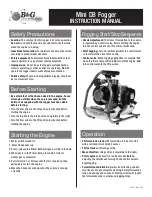
K465i Operations and Maintenance
P/N 1212831 Rev C
Page 5-163
Copyright
©
2012
Veeco Instruments, Inc. Confidential
All Rights Reserved
INITIAL STEPS OF LEAK CHECKING
After completing any required maintenance on the reactor, transfer hub chamber, or particle
filters, much of the system will be at atmospheric pressure. Before leak checking can be
initiated, the system must be restored to vacuum conditions. For other system
maintenance, that specific section of the gas panel will need to be placed
under vacuum
.
Specific maintenance sections of this document include instructions on the restoration of
necessary parts of the system to vacuum for leak checking. Refer to the
System Diagram
to
determine where the nearest leak checking port is located, and what portions of the gas
panel will need to be evacuated for leak checking.
In general, returning the system
to vacuum
is started at the process pump and proceeds
backward through the system to the sections to be leak-checked. Following this procedure
ensures that flow in the
forward
direction through the system is always maintained.
Backflows through the particle filter into the reactor can cause reactor contamination and
system degradation, and should be avoided.
Calibrate the leak detector following the user’s manual that accompanies the particular leak
detector being used. Make sure that the leak detector is calibrated for helium (or the gas
being used to leak check).
Connect the leak detector to the relevant leak check port.
Pump down the leak check port using the leak detector.
Always leak check the leak detector, leak detector fittings and cold trap prior to opening the
leak check port manual valve and leak checking the system.
When the leak check port is leak tight, open the leak check port manual valve and proceed
with leak checking.
RECOMMENDED METHODOLOGY FOR LEAK CHECKING
In general, it is recommended to start leak checking from top to bottom, and back to front
in an organized, sequential pattern. If the leak check is not performed in sequence at each
joint, from the leak detector to the farthest point, it becomes more difficult to determine
where a leak is, if present. Additionally, by leak checking the lines from top to bottom, the
potential for false leak detections from other plumbing lines (because helium rises) is
reduced.
















































